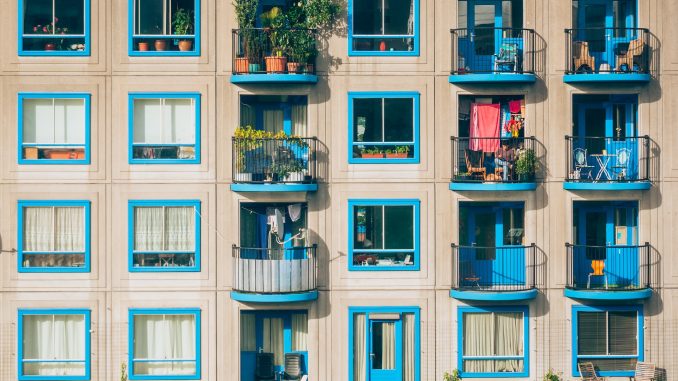
Introduction
Finding affordable housing can be a daunting task, especially for those with limited income. However, apartments for the low income can provide a solution for those in need of affordable housing options. These apartments are specifically designed to cater to individuals or families who are struggling to make ends meet and need a safe and secure place to call home.
In this article, we’ll explore apartments for the low income in detail, discussing what they are, how to qualify for them, the benefits they offer, and more. We’ll also answer some of the most commonly asked questions about these types of apartments and provide tips on how to find the right one for you.<h2 style=”font-size:20px; font-weight:bold;”>What are Apartments for the Low Income?</h2>
Apartments for the low income, also known as affordable housing, are specifically designed for individuals or families with limited income. These apartments are subsidized by the government or other organizations to ensure that individuals and families in need have access to affordable housing options.
Typically, apartments for the low income are managed by local housing authorities, nonprofit organizations, or private landlords. These organizations work together to provide housing to those who need it most, often offering rent subsidies, reduced rent, or other forms of financial assistance to ensure that the apartments are affordable for those in need.<h3 style=”font-weight:bold; font-size:18px;”>How to Qualify for Apartments for the Low Income</h3>
To qualify for apartments for the low income, individuals or families must meet certain income requirements. These requirements vary depending on the location of the apartment and the organization that manages it. Typically, the income requirements are based on the Area Median Income (AMI) of the local area.
In general, individuals or families with an income that is 80% or less than the AMI of the local area will qualify for apartments for the low income. However, some apartments may have more stringent income requirements, so it’s important to check with the organization that manages the apartment to determine if you qualify.
In addition to income requirements, there may be other eligibility criteria that must be met, such as credit history, criminal background checks, and more. Again, it’s important to check with the organization that manages the apartment to determine if you meet all eligibility criteria.
Benefits of Apartments for the Low Income
There are numerous benefits to living in apartments for the low income, including:
1. Affordable Rent
The most significant benefit of apartments for the low income is the affordable rent. These apartments are designed to be affordable for those in need, with rent subsidies, reduced rent, or other forms of financial assistance to ensure that individuals and families can afford to live there.
2. Safe and Secure Environment
Apartments for the low income are typically managed by local housing authorities, nonprofit organizations, or private landlords who ensure that the apartments are safe and secure for residents. This can provide peace of mind for those who may be concerned about living in an unsafe or insecure environment.
3. Access to Services
Many apartments for the low income also offer access to services such as community centers, after-school programs, and other resources that can help individuals and families thrive. These services can be particularly beneficial for those with limited income who may not have access to other resources.
4. Stability
One of the biggest challenges for those with limited income is finding stable housing. Apartments for the low income offer stability by providing a safe and secure place to call home. This can help individuals and families focus on other aspects of their lives, such as work, education, and personal growth.
FAQs
1. Can I apply for apartments for the low income if I am unemployed?
Yes, you can still apply for apartments for the low income if you are unemployed. However, you will need to meet the income requirements for the apartment, which may be based on the income you received while you were employed.
2. Can I bring my pet to an apartment for the low income?
This depends on the specific apartment and the organization that manages it. Some apartments may allow pets, while others may not. It’s important to check with the organization that manages the apartment to determine if pets are allowed.
3. How long can I stay in an apartment for the low income?
The length of time you can stay in an apartment for the low income may vary depending on the apartment and the organization that manages it. Some apartments may have a maximum stay of one year, while others may allow residents to stay for several years. It’s important to check with the organization that manages the apartment to determine the length of stay allowed.
How to Find Apartments for the Low Income
If you’re in need of affordable housing options, there are several ways to find apartments for the low income:
1. Contact Your Local Housing Authority
Your local housing authority can provide information on apartments for the low income in your area. They may also be able to help you determine if you qualify for these types of apartments.
2. Check Online Listings
There are several websites that list apartments for the low income, including Affordable Housing Online, Social Serve, and HUD’s Affordable Apartment Search.
3. Contact Nonprofit Organizations
Nonprofit organizations may also manage apartments for the low income in your area. Contacting these organizations can provide information on available apartments and eligibility requirements.
Conclusion
Finding affordable housing options can be a challenge, but apartments for the low income can provide a solution for those in need. These apartments are designed to be affordable, safe, and secure for individuals and families with limited income. By understanding what apartments for the low income are, how to qualify for them, and where to find them, you can take the first step towards finding a safe and secure place to call home.


Leave a Reply